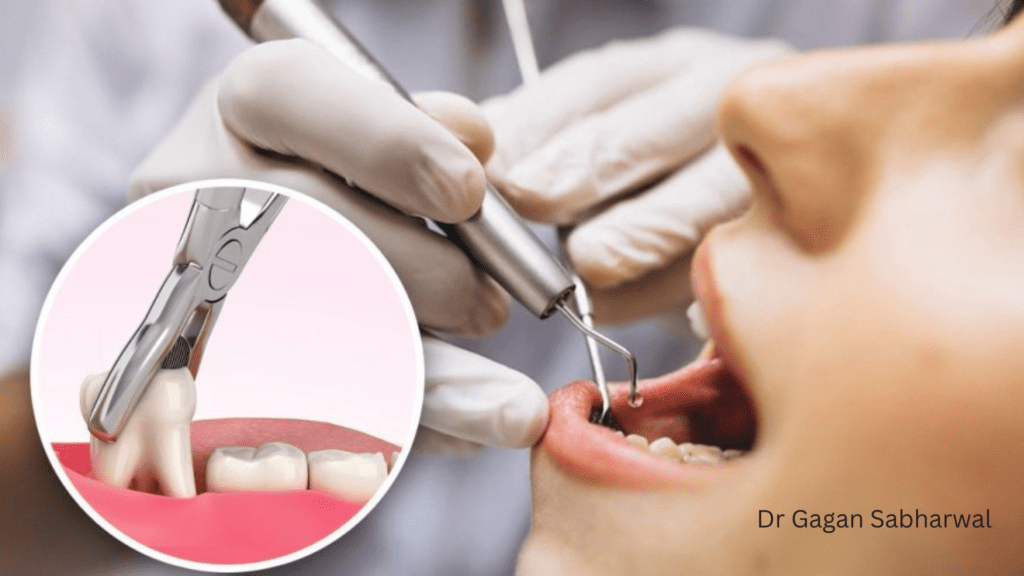Virtually everyone experiences wisdom tooth problems at some point. For some, these teeth grow effortlessly. For others, they create pain, infection, or misalignment. Knowing when and why to eliminate them helps you avoid future dental troubles.
What Are Wisdom Teeth?
Wisdom teeth are the last set of molars. They usually materialize between ages 17 and 25.
- They are detected at the back of your mouth.
- Many jaws don’t have enough space to fit them.
- This absence of space often causes pain or misalignment.
Fun fact: Not everyone gets all four wisdom teeth. For some, only one or two develop
Signs You May Need Wisdom Tooth Removal
Not all wisdom teeth need extraction. But here are ordinary signs that suggest removal:
- Persistent pain or pressure at the back of the mouth.
- Swelling and redness near the gums.
- Struggle chewing or opening the jaw fully.
- Crowding or shifting of closeby teeth.
- Frequent infections or foul breath.
If you notice these, it may reveal an impacted wisdom tooth.

Understanding Impacted Wisdom Teeth
An impacted wisdom tooth doesn’t erupt properly. It either stays under the gums or grows at the wrong angle.
Types of impaction include:
- Partial eruption: Tooth breaks the surface but doesn’t fully transpire.
- Complete impaction: Tooth stays fully confined under gums or bone.
Untreated impaction can lead to:
- Repeat gum infections.
- Harm to nearby teeth.
- Cysts or bone loss around the tooth.
Prospects of Delaying Removal
Hindering wisdom tooth removal can increase complications. Some risks include:
- Gum disease: Hard-to-clean areas collect bacteria.
- Decay: Trapped teeth damage themselves and neighbors.
- Misalignment: Pressure shifts other teeth.
- Chronic pain: Jaw stiffness or headaches increase.
Acting upon it early prevents bigger dental issues later.
The Wisdom Tooth Removal Method
With contemporary dentistry, dental extraction is straightforward, uncomplicated and safe. Here’s what usually happens:
- Consultation: Your dentist checks with X-rays.
- Anesthesia: Local anesthesia or sedation guarantees comfort.
- Extraction: Effortless removal if visible, or minor surgery if trapped.
- Closure: Stitches may be settled to support healing.
At Dr Gagan Sabharwal’s clinic, progressive surgical precision makes the procedure smooth and stress-free.

Recovery and Aftercare
Recovery takes around 7–10 days. Following instructions hastens healing.
- Use ice packs to lower swelling.
- Eat soft foods like soups and yogurt.
- Elude straws and smoking to prevent complications.
- Take prescribed medications on time.
- Attend follow-up visits for safe and secure healing.
Most patients return to usual activities within a week.
Myths vs. Facts
Clearing myths helps lessen fear:
- Myth: Wisdom tooth removal is invariably painful.
Fact: Anesthesia makes it almost painless. - Myth: Only teenagers get wisdom teeth.
Fact: They can emerge in your 20s or even 30s. - Myth: All wisdom teeth have to be removed.
Fact: Some grow normally and never cause problems.
When to Call Your Dentist
After surgery, some discomfort is expectedly normal. But call your dentist if you notice:
- Excessive or prolonged bleeding.
- Severe swelling that gets worse after 3 days.
- Pus or foul odor at the site.
- Benumbed feeling lasting more than 24 hours.
Early intervention prevents complications.
Conclusion
Wisdom tooth problems are common but easily manageable. Understanding the signs, risks, and recovery process helps you make the correct choice. With proper care, recovery is smooth and results are positive.
At Dr. Gagan Sabharwal’s clinic , you receive specialized and exclusive care in oral and maxillofacial surgery. From consultation to recovery, every step is handled with precision, finesse and compassion.
If you’re facing wisdom tooth pain, book your consultation with Dr. Gagan Sabharwal today and ensure your sustained dental health.



